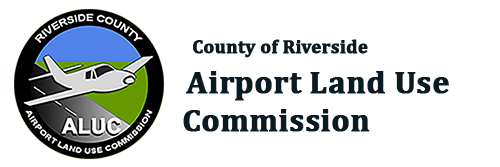WHAT IS THE MARCH ARB COMPATIBLE USE STUDY?
The MCUS effort directly benefits March ARB and nearby communities by:
- Protecting the health, safety, and welfare of area residents and workers
- Promoting and preserving viable, long-term land and shared resource use between March ARB and nearby communities
- Sustaining the economic vitality of these jurisdictions
WHAT ARE THE GOALS AND OBJECTIVES OF THIS STUDY?
The primary goal of the MCUS is to identify challenges and opportunities in sustaining both the military mission and local economic growth and development. The following objectives guide this study.

UNDERSTANDING
Bring together community and military representatives in an open forum to discuss compatibility, local perspectives on shared resource use and future development, and desired outcomes.

COLLABORATION
Encourage cooperative, coordinate resource planning among the military and surrounding communities.

ACTION
Provide a set of mututally supported tools and procedures through which local jurisdictions, agencies, the military, and other stakeholders can implement recommendations.
WHAT DOES THE STUDY PROVIDE?
The MCUS is an important tool for enhancing communication and building partnerships between March ARB and neighboring communities. The study provides a body of information for stakeholders to learn how military operations and local growth trends can impact each other and potentially undermine military readiness and vital economic growth. It includes the following elements:
- An assessment of existing resource usage, potential growth areas, economic development opportunities around March ARB, and areas in which collaborative planning can be enhanced.
- Information to help surrounding jurisdictions make informed decisions regarding the sustainable and compatible use of shared resources.
- Mitigation strategies for addressing compatibility challenges identified in the region and promoting collaborative planning around March ARB.
WHY IS IT IMPORTANT TO PARTNER WITH MARCH ARB?
Protecting the military mission of March ARB is critical to ensuring the U.S. Air Force Reserve’s continued role in our nation’s defense and as a major contributor to the local and regional economies. March ARB is the largest reserve base in the Air Force and provides strategic airlift and air refueling capability for the Department of Defense. It supports the transportation of people, equipment, and materials across the globe. March ARB further provides logistical support to other government agencies, including the Department of Homeland Security, and helps sustain March Inland Port activities and the regional economy by supporting joint use of its airfield. The installation is a significant driver of the local economies and provides $579 million in estimated annual economic impact, over 9,500 local jobs created, and $396 million in local payroll per year.
WHAT IS COMPATIBILITY?
Compatibility, in relationship to military readiness, strives to balance community and military needs and interests. The goal of compatibility planning is to promote an environment in which military installations are sustained and communities continue to flourish. This is achieved by identifying ways to sustain resources that are or will be shared among the military and nearby jurisdictions. This study will assess a set of 29 compatibility, resiliency, resource, and social factors — or types of challenges — as the framework for exploring and identifying opportunities and solutions within the Study Area. Compatibility issues may or may not be identified for each of the 29 factors; conversely, several challenges or concerns of just one type could be identified. Issues will be identified and assessed throughout the duration of the study.

AIR QUALITY

ANTI-TERRORISM / FORCE PROTECTION

BIOLOGICAL RESOURCES

CHANGING ENVIRONMENT

COMMUNICATION

CULTURAL RESOURCES

CYBER SECURITY

DUST/SMOKE/STEAM

ENERGY DEVELOPMENT

EXTREME WEATHER

FREQUENCY SPECTRUM

HOUSING AVAILABILITY

INFRASTRUCTURE

LAND/AIR SPACE COMPETITION

LAND USE

LEGISLATION

LIGHT & GLARE

NOISE

PUBLIC SERVICES

PUBLIC TRESPASSING

ROADWAY CAPACITY

SAFETY

SCARCE NATURAL RESOURCES

STORM WATER MANAGEMENT

UTILITIES SECURITY

VERTICAL OBSTRUCTIONS

VIBRATION

WATER QUALITY

WILDFIRES


ANTI-TERRORISM / FORCE PROTECTION

DUST/SMOKE/STEAM

ENERGY DEVELOPMENT

FREQUENCY SPECTRUM

INFRASTRUCTURE

LAND USE

LIGHT & GLARE

NOISE

ROADWAY CAPACITY

SAFETY

VERTICAL OBSTRUCTIONS

VIBRATION

CHANGING ENVIRONMENT

CYBER SECURITY

EXTREME WEATHER

STORM WATER MANAGEMENT

UTILITIES SECURITY

WILDFIRES

AIR QUALITY

BIOLOGICAL RESOURCES

LAND/AIR SPACE COMPETITION

SCARCE NATURAL RESOURCES

WATER QUALITY


COMMUNICATION

CULTURAL RESOURCES

HOUSING AVAILABILITY

LEGISLATION

PUBLIC SERVICES

PUBLIC TRESPASSING
WHAT DOES THE MARCH ARB COMPATIBLE USE STUDY RECOMMEND?
The MCUS includes recommendations that stakeholders can implement to address identified compatibility issues and to guide compatible development in the future. In recognizing a one-size-fits-all approach was not appropriate for the entire Study Area, the recommendations were developed by the project stakeholders to ensure tailored options that best meet each community’s needs. It is critical stakeholders that move forward with implementing these recommendations.
Most compatibility issues can be addressed through nonregulatory strategies that promote enhanced communication, collaboration, and education, but some recommendations may involve amendments to community general and comprehensive plans and/or land use controls, such as zoning, subdivision regulations, and building codes.

INFORMATION

COMMUNICATION

COORDINATION

PARTNERSHIPS

POLICY

INFORMATION

